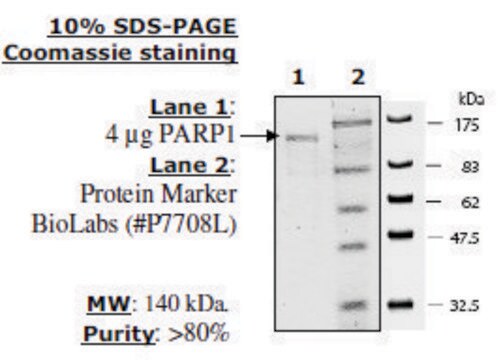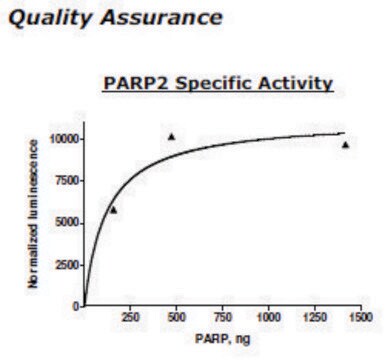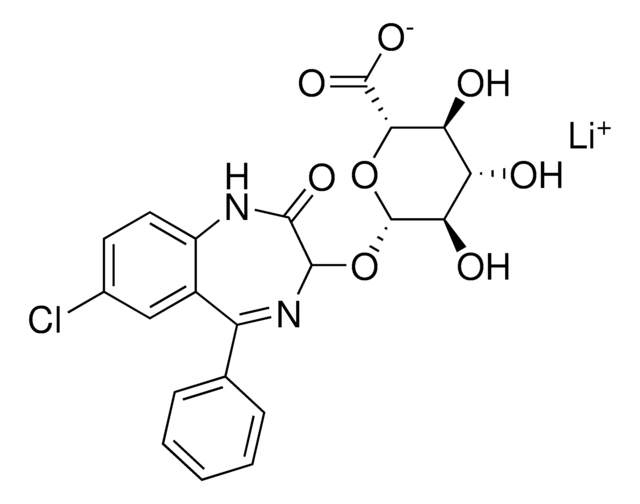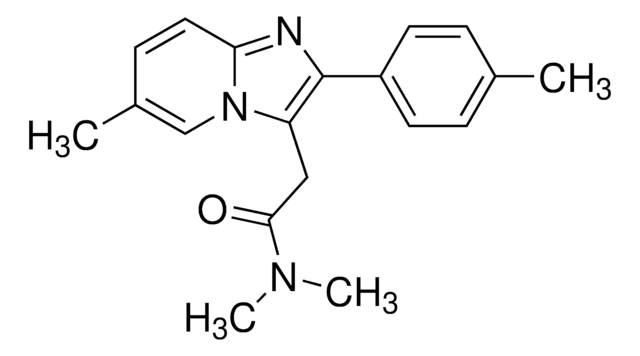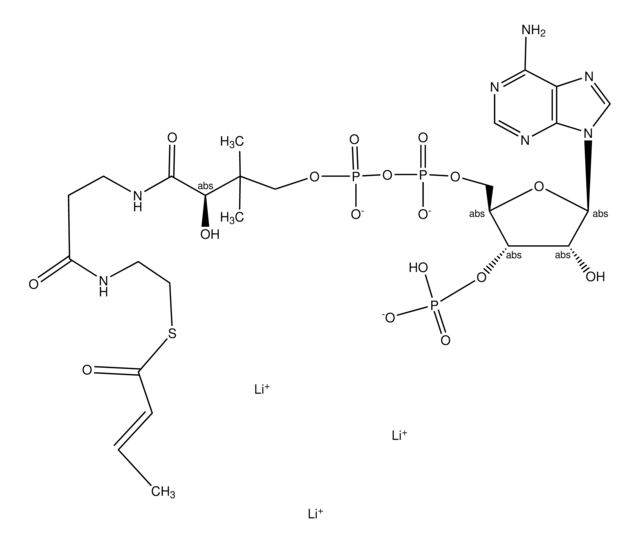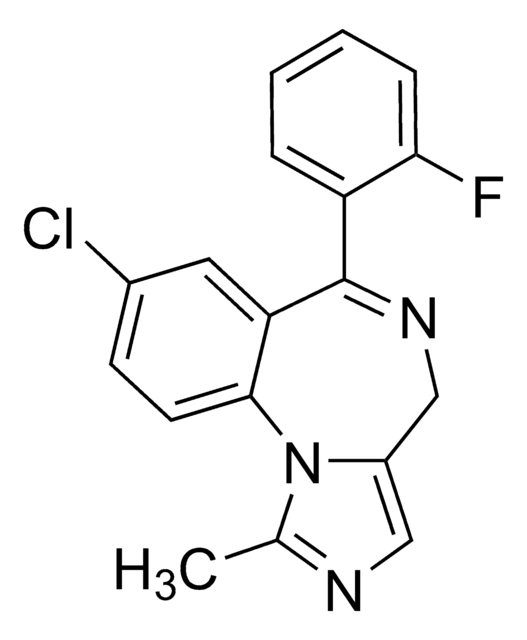P0996
PARP-1 human
recombinant, expressed in E. coli
Synonym(s):
NAD+ ADP-ribosyltransferase, Poly(ADP-ribose) Polymerase
About This Item
Recommended Products
recombinant
expressed in E. coli
Quality Level
form
solution
UniProt accession no.
shipped in
wet ice
storage temp.
−20°C
Gene Information
human ... PARP1(142)
Looking for similar products? Visit Product Comparison Guide
General description
Application
Biochem/physiol Actions
Unit Definition
Physical form
Legal Information
Storage Class Code
10 - Combustible liquids
WGK
WGK 2
Flash Point(F)
Not applicable
Flash Point(C)
Not applicable
Regulatory Listings
Regulatory Listings are mainly provided for chemical products. Only limited information can be provided here for non-chemical products. No entry means none of the components are listed. It is the user’s obligation to ensure the safe and legal use of the product.
JAN Code
P0996-100UN:
P0996-1KU:
P0996-BULK:
P0996-VAR:
Choose from one of the most recent versions:
Already Own This Product?
Find documentation for the products that you have recently purchased in the Document Library.
Our team of scientists has experience in all areas of research including Life Science, Material Science, Chemical Synthesis, Chromatography, Analytical and many others.
Contact Technical Service